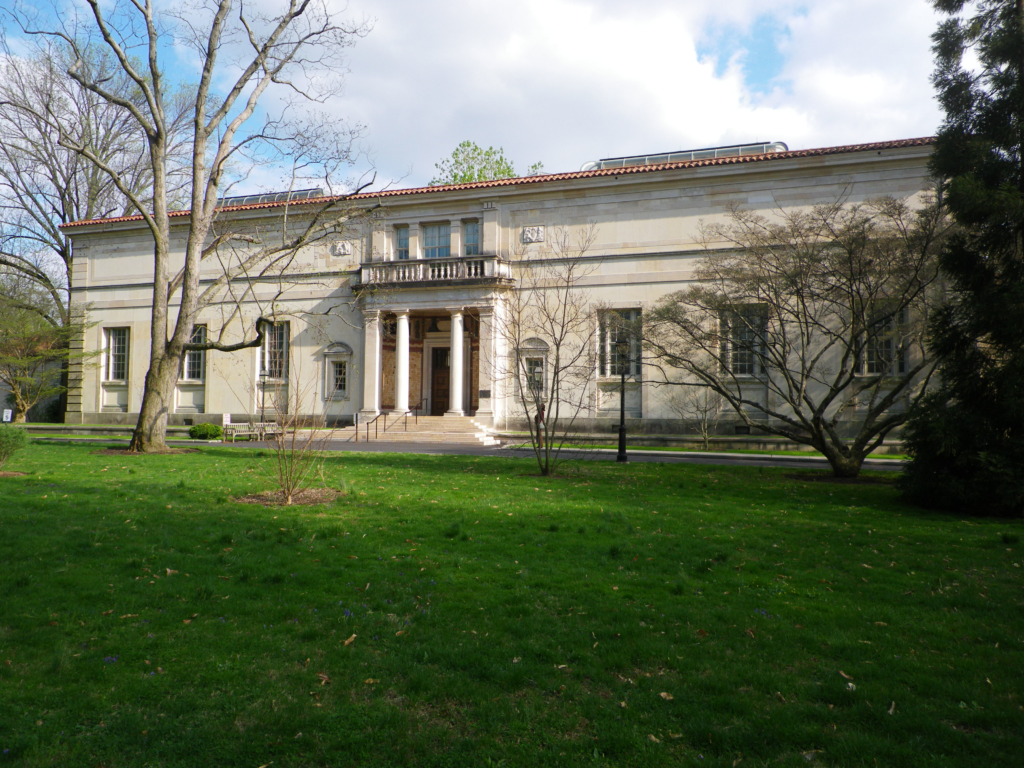Albert Barnes loved art as much as he hated the Philadelphia art establishment. The bylaws for his foundation reflected that . . . but they were not respected.
“The main function of the museum has been to serve as a pedestal upon which a clique of socialites pose as patrons of the arts.”
—Albert C. Barnes
The Philanthropy Roundtable recently released a documentary about the Barnes Foundation in Philadelphia. The video tells a cautionary tale to philanthropists who wish to leave a legacy after their death. Barnes left careful instructions for what should be done with his foundation, but the allure of a $25 billion collection of art was too much temptation for the Philadelphia establishment to resist.
Dr. Albert Barnes made his fortune by developing and commercializing an antiseptic drug called Argyrol. He began collecting art as a teen, and in 1912 he gave William Glackens, an artist and high school classmate, a sum of money to purchase paintings in Paris. He was passionate about living in proximity with art and closely studying paintings, and he wanted to help others cultivate an appreciation of this practice. As his collection continued to grow, he established the Barnes Foundation to “promote the advancement of education and the appreciation of the fine arts.” With the foundation, he built a gallery and arboretum twelve miles outside of Philadelphia in Lower Merion, PA. Importantly, Barnes viewed the foundation as a teaching institution that had a gallery—not the other way around.
The foundation was devoted to what he called the “objective method” of looking at art. Barnes believed that a person develops an appreciation for works of art “not by aimless wandering in galleries” but by “organized effort and systematic study.” Barnes believed that studying good paintings “offers greater interest, variety, and satisfaction than any other pleasure known to man.” Barnes wanted the collection to be used to educate artists, blue-collar workers, and the common man.
Anyone could apply to enroll as a student at the foundation; no education was required. Although the foundation was not open to the public, anyone who wished to visit could write to Dr. Barnes and ask for permission to see the collection, or even just show up at the front door and typically be granted access. Workers in his factory were given time in the workday to participate in seminars about art, philosophy, and aesthetics—often bringing in works from his collection as discussion pieces.
To Barnes, art was for everyone. He believed that the art establishment acted as a gatekeeper for the way that people were taught to look at, and think about, art. His scorn for the Philadelphia art establishment grew throughout his life—even calling the Philadelphia Museum of Art a “House of artistic and intellectual prostitution” at one point. Dr. Barnes knew how valuable his collection was and that the art elites in Philadelphia would try to claim his collection for their own after his death.
He laid out the bylaws for his foundation stipulating that no part of the collection should ever be loaned out or moved and that the paintings should stay in the exact arrangement they were in upon his death. In an obvious jab at the Philadelphia Intelligentsia, the bylaws stated that no trustee for the Foundation “shall be a member of the faculty or Board of Trustees or Directors of the University of Pennsylvania, Temple University, Bryn Mawr, Haverford or Swarthmore Colleges, or Pennsylvania Academy of the Fine Arts.” Barnes had an arrangement with Lincoln University, a historically black college, to administrate the foundation upon his death.
Albert Barnes died in an automobile accident in 1951, and the bylaws for his foundation would be put to the test.
Less than a year after Barnes’ death, Walter Annenberg—owner of The Philadelphia Inquirer—launched an editorial campaign attempting to sway public opinion about the Barnes Foundation. The editorials assassinated Dr. Barnes’ character and argued that the foundation should be made public. In 1960, nine years after Barnes’ death, the attorney general of Pennsylvania ordered that the foundation be open to the public for at least two days a week.
But the Philadelphia establishment was not content to stop there. In 1991, the foundation president announced that he was going to sell several paintings to raise money for building repairs, but he backed down after public outcry. The following year a court ruled that a collection of 90 paintings could be loaned out for a one-time revenue-generating world tour that included stops in Paris, Tokyo, and, of course, Philadelphia.
This was an egregious violation of Barnes’ wishes as expressed in the by-laws, “After the Donor’s death no picture belonging to the collection shall ever be loaned, sold or otherwise disposed of except that if any picture passes into a state of actual decay so that it is no longer of any value it may be removed for that reason only from the collection.”
The final—and most complete—violation of Dr. Barnes wishes came in 2004, when a court granted permission to the foundation to erect a new home for the collection in downtown Philadelphia, halfway between the Philadelphia Museum of Art and the Pennsylvania Academy of the Fine Arts. When the ruling came out, the secretary for the foundation said, “we at the foundation are committed to the decision [Barnes] made to bring this world-class collection to a wider audience.”
Tickets to the Barnes Foundation are currently $30 for an adult, and more than 250,000 people are in attendance each year, yet the foundation congratulates itself for helping realize the vision of its founder. In the Barnes Foundation’s 2021 annual report, the Annenberg Foundation (the same Annenberg who trashed Barnes in The Philadelphia Inquirer), the City of Philadelphia, and the Commonwealth of Pennsylvania are all listed as $5 million+ donors.
Today, the Barnes Foundation is a museum masquerading as an educational institution. If you are someone who plans on leaving a legacy behind, carefully consider how that should be done. And maybe give the Philanthropy Roundtable a call.






This was an insightful, and disturbing, article. I am wondering how this sad ending might have been avoided. Dr. Barnes was so very clear about his intentions.